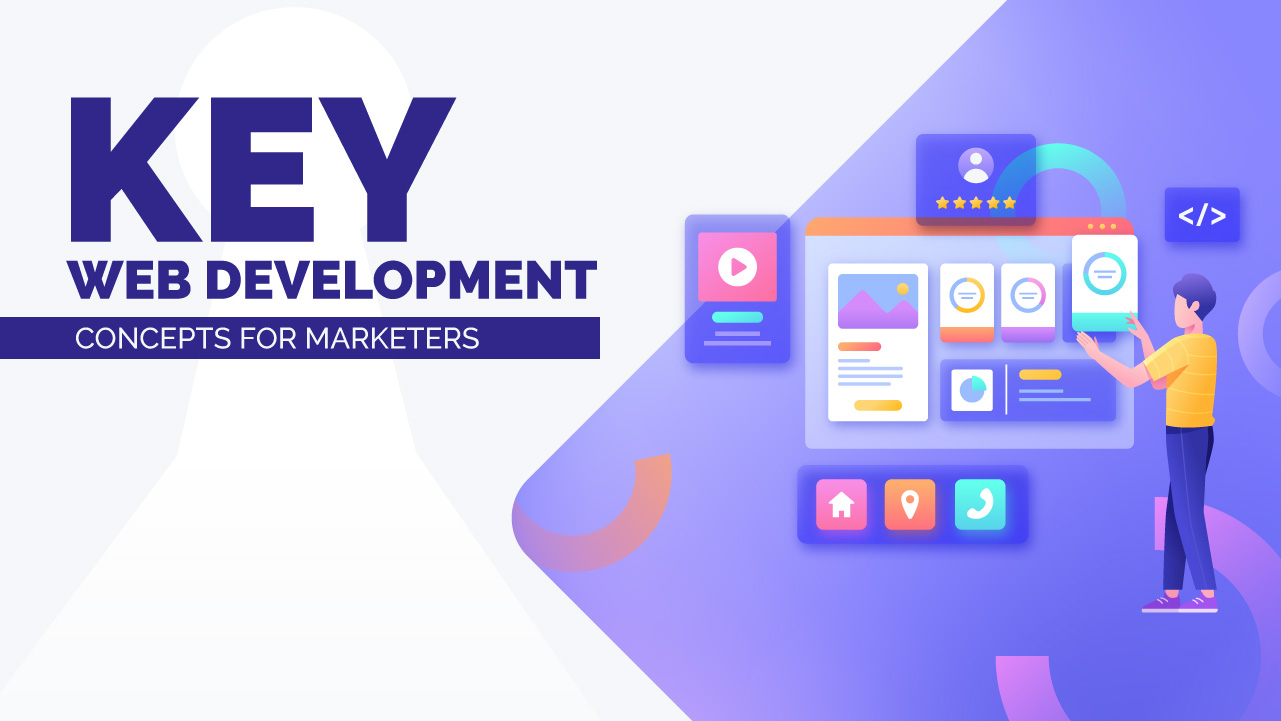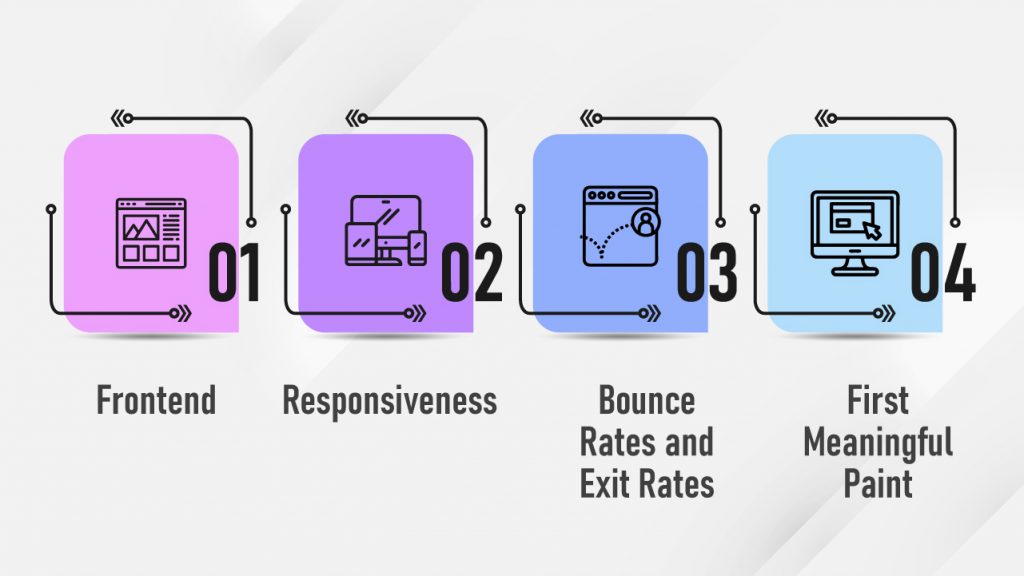Key Web Development Concepts for Marketers

“First impressions are the best impressions.” This holds true not only for the physical world but also for the virtual world. A decade ago, visitors used to judge a business based on the physical outlet. But with the ticking of the clock, now the judgment is made on the visual appearance. Thus, we can say- your website is your identity.
A digital marketer is always worried about providing the viewers with the best web experience while increasing the online presence of the brand. For a better digital presence, the web development team should focus on all the essential concepts that allow the target audience to connect and engage with the brand. What are those key marketing metrics that provide the viewers with an immersive experience on the website?
Here’s a list for a web development team to churn.
1. Frontend
It has often been found that using too many resources for the website pages, such as different fonts, styles, and colors affects its loading speed. Rather than focusing on various resources that compromise the speed of the website, focus on the available resources.
Optimizing the size of the files that are uploaded on the website can be a good decision. As a web developer, it is essential to know that cutting down on the size of files, such as images, can help the website load quickly. Also, while images are a great asset to have, using relevant images that go with your content would keep your page less cluttered.
For example, if you are developing a food delivery website, then using PNG files for food images will improve the overall quality of the image. The end-user in this case would end up ordering food, which will help in getting higher conversion. On the other hand, if you are working with a content-producing website, then JPEG files would do the job for you without hurting the performance of the website.
2. Responsiveness
The concept of web development holds responsiveness at its heart. Responsiveness, basically refers to the flexibility of the website content, to fit in properly on any type of device. A website is said to have a responsive design if it loads successfully & adapts to the size of the screen irrespective of the device.
Although, how does responsiveness affect the business?
Responsiveness allows the user to have a flexible experience while visiting the website. It ensures a user-friendly layout, where the viewer doesn’t need to worry about using a specific device for viewing the services online. Moreover, a responsive layout will also help the website load faster and appear at a healthy spot in search engine results.
Working as a leading digital marketing agency, our priority lies in communicating your brand message clearly to your audience, irrespective of the size of the device. Fun fact, even the consumer, on the other hand, would like to get treated on every device he/she uses. This key concept of web development should keep your team busy if you have still not shifted to responsive designs.
3. Bounce Rates and Exit Rates
Don’t we always notice some symptoms associated with the illness before actually falling ill!? The same is the case with your website too. Bounce & exit rates are those symptoms. These rates determine the behavior of the viewers and how they interact with the page.
The bounce rate gives the ratio of viewers who arrived on the website and decided to close it without checking any other page, and the total number of views of the page. On the other hand, the exit rates will reveal the percentage of exits from a particular page while compared to the total views that it receives. For an e-commerce platform, a high exit rate on the order page without any purchase is something alarming. But it’s never too late to get back.
Bounce and exit rates are excellent performance-based indicators, which tell how well the viewer is interacting with the website. Moreover, it also gives insights into the viewer’s entry and exit point in the sales funnel. One of the reasons for high bounce rates can be the slow loading time of the landing page. On the other hand, if viewers are leaving the website from the order page without ordering anything, then the business needs to have a deep dive & check what’s wrong.
Better content and call to action (CTA) can help in keeping these metrics within a preferred range.
4. First Meaningful Paint
First Meaningful Paint (FMP) is a performance-based metric, which tells the time it takes for the primary content of the page to appear on the screen. Web developers often spend hours slashing the time it takes for the page’s content to load, as it directly affects the conversion rate. It can be said that FMP sets the first impression of the business. Therefore, it might not be a good idea to make the viewer wait. An added advantage of better FMP is that it also improves the ranking of the page in search results.
Another element that should fall on the list of key web development concepts is Time to Interactive (TTI). TTI measures the time in which the website loads and becomes interactive.
FMP and TTI can be improved with better image processing and optimizing the javascript as well as focussing on better execution of key scripts.
Conclusion
To conclude, user experience can be a huge deciding factor between the brand and its competitor. Involving the best web development practices can not only help the consumer in engaging more with the content, but also choose the brand.
Lastly, key web development concepts and their proper execution will also lay a strong foundation for the content team. Once the team is aware of the requirements and prototyping meets all the demands, then the brand is in a sweet spot to keep the consumer hooked to the website! Not only this but with these, the brand can be kept hooked to the top positions on the search engines.
Dreaming to develop a website that stands top of the search engine crowd? Get in touch with us today!



